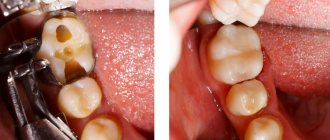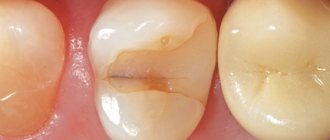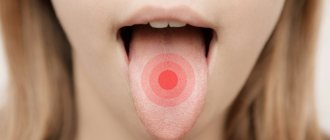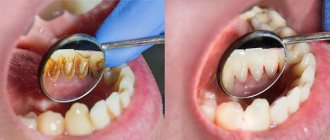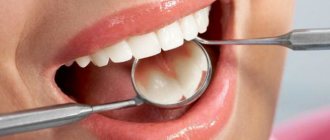Prosopalgia is a collective clinical concept that combines all pain syndromes that occur in the facial area. The complex anatomical and functional organization of the facial structures and nervous system of this area determines the diversity of pathogenetic mechanisms of pain.
Among the latter, we can distinguish compression, inflammatory, and reflex. The great individual significance of the face and increased attention to this part of the human body determines the frequent occurrence of prosopalgia of psychogenic origin. The neurotic component is often layered on top of any pathological processes in the facial area, which should certainly be taken into account in the treatment of facial pain of various natures. Due to its variable etiology, prosopalgia is the subject of supervision of doctors of various clinical specializations - neurology, otolaryngology, ophthalmology, dentistry, psychiatry.
Causes of prosopalgia
An inflammatory reaction can act as an etiofactor of facial pain. Most often, prosopalgia of inflammatory origin occurs with sinusitis. It can be observed in otitis media, ophthalmological diseases (iridocyclitis, uveitis, conjunctivitis, keratitis, corneal ulcer), TMJ arthritis, and have an odontogenic etiology (pulpitis, periodontitis). Prosopalgia can occur with inflammatory lesions of the vessels of the facial area, for example, with Horton's disease. Often, neurogenic prosopalgia has an inflammatory etiology with neuralgia of the glossopharyngeal nerve, trigeminal nerve, Oppenheim syndrome, ganglionitis of the pterygopalatine ganglion, ganglioneuritis of the geniculate ganglion.
On the other hand, neurogenic prosopalgia may have a compression genesis, i.e., arise as a result of compression of nerve trunks or nodes due to changes in the relative position of the anatomical structures of the facial area, narrowing of bone and intermuscular nerve canals, development of tumor formations, etc. Compression etiology may have vascular prosopalgia, for example, carotidynia due to compression of the carotid artery.
The reflex mechanism of pain syndrome is often realized in odontogenic and neurogenic facial pain. The cause of prosopalgia in such cases is pathological reflex impulses coming from chronic infectious foci. An example is neuralgia of the ear ganglion. Myogenic prosopalgia of reflex genesis occurs with myofascial syndromes in the neck and shoulder girdle. Other causes of myogenic prosopalgia may include TMJ dysfunction (Costen syndrome), bruxism, and myofascial syndrome in the masticatory muscles.
Prosopalgia of psychogenic origin often occurs in suspicious, emotionally labile people against the background of overwork, chronic psycho-emotional discomfort, or as a result of an acute stressful situation. Often, psychogenic prosopalgia is observed in persons with hysterical neurosis, neurasthenia, and depressive neurosis. It can occur as part of psychiatric diseases such as schizophrenia, psychopathy, manic-depressive psychosis.
In some cases, prosopalgia is iatrogenic. Thus, Oppenheim syndrome can occur after ophthalmological operations; tooth extraction and other dental interventions can trigger the development of dental plexalgia or atypical odontalgia. One of the causes of neurogenic facial pain is damage to nerve structures during operations in the facial area. In addition, a number of facial pains do not have a clearly established etiology. For example, cluster headache, atypical prosopalgia, chronic paroxysmal hemicrania.
Facial pain
The face is an important component of a person’s image; it reflects not only our mood and success in life, but also our well-being. Therefore, the significance of pain in this part of the body is difficult to overestimate.
Unfortunately, it is not always possible to make a correct diagnosis right away, because there are many reasons for the development of facial pain. Most often, both patients and doctors sin due to dental diseases. Often the patient even loses perfectly healthy teeth in an attempt to get rid of the pain before the correct diagnosis is made.
Why does it hurt?
Attention! This article will not
facial pain caused by diseases of the ENT organs, eyes and dental system, primary headaches (migraine, tension headache, cluster headache) are described (according to the International Classification of Headache Disorders, 2004).
Patients are often concerned about trigeminal neuralgia, Tholos Hunt syndrome, and atypical facial pain.
1. For trigeminal neuralgia
pain most often occurs in the area of the second and third branches of the nerve (upper and lower jaw). The disease is characterized by severe short-term attacks of pain lasting up to 2 minutes, which are provoked by irritation of a certain area of the skin of the face or the mucous membrane of the mouth or nose. Pain can be triggered by the most ordinary events - eating cold or hot food, wiping the face with a towel, etc. Usually, after the onset of an attack, a person does not cry or scream, but freezes in place, waiting for the severe pain to subside.
The causes of neuralgia can be brain tumors, multiple sclerosis, infectious diseases (most often herpes zoster), vasoneural conflict (contact irritation of the trigeminal nerve by a nearby artery).
Neuralgia of other cranial nerves (glossopharyngeal, laryngeal, etc.) can also cause facial pain, but are extremely rare.
2. If you gradually develop symptoms such as “boring” or “gnawing” pain in the eye, redness, double vision, drooping eyelid and exophthalmos (displacement of the eyeball forward, “bulging eye”), then most likely this is a syndrome Tolosa Hunta (painful ophthalmoplegia)
. Symptoms usually get worse over a few days. There may be spontaneous improvements. Another characteristic feature of this disease is the dramatic improvement with corticosteroids.
The diagnosis of Tholos Hunt syndrome is made if all other causes have been excluded, and there are many of them: infectious diseases, tumors, vascular lesions, sarcoidosis. The causes of this disease are not fully understood; it is believed that the main mechanism of development is autoimmune.
3. Atypical facial pain
is another cause of facial pain that is a diagnosis of exclusion. When examined and questioned, patients with atypical facial pain indicate areas of pain that do not fit into any zone of innervation of the cranial nerves.
The characteristics of pain can be very different, the manifestations are disguised as diseases of the teeth, ENT organs and other diseases. Such patients often have to go through many examinations by a dentist, maxillofacial surgeon, ENT surgeon, and neurologist. Moreover, the data from these examinations do not explain the cause of facial pain.
And that's not so bad. Healthy teeth are often removed, believing that facial pain is caused by dental pathology. Another problem is that patients with this disease often suffer from depression, anxiety and other mental disorders, which makes both treatment and diagnosis difficult. Actually, these pains are considered psychogenic. Most often they are provoked by stress or some kind of mental disorder.
Surveys
For facial pain, consultations with a dentist, ENT specialist, ophthalmologist, and sometimes an oral surgeon are often required to rule out pain that is NOT caused by neurological problems.
In most cases of facial pain, it is necessary to perform an MRI (often with contrast, in various modes) of the brain to exclude tumors, multiple sclerosis, vasoneural conflicts and other pathologies.
Treatment
In most cases of facial pain, with the possible exception of Tolos Hunt syndrome (which is treated as an autoimmune disease with hormones), you will be offered anticonvulsants (eg, carbamazepine, pregabalin, topiramate) or antidepressants (amitriptyline, duloxetine). The fact is that it is these groups of drugs that are most effective in treating pain.
If there is a vasoneural conflict (for example, with trigeminal neuralgia), you may also be offered a neurosurgical operation, when a special gasket is installed between the vessel and the trigeminal nerve, which prevents the artery from irritating the trigeminal nerve. Non-medicinal methods are also very effective - acupuncture, physiotherapy, biofeedback methods, psychotherapy, etc.
In any case, do not self-diagnose or self-medicate, consult a doctor.
Be healthy!
Maria Meshcherina
Photo istockphoto.com
Classification of prosopalgia
Facial pain is classified primarily by mechanism of development. Prosopalgia is distinguished:
- vascular
- neurogenic
- myogenic
- psychogenic
- symptomatic
- atypical
- painful ophthalmoplegia
Vascular facial pain
includes:
- bundle cephalalgia
- paroxysmal hemicrania
- Horton's disease
- idiopathic sudden cephalalgia (ISH)
- SUNCT syndrome.
Neurogenic prosopalgia
includes:
- trigeminal neuralgia
- neuralgia of the glossopharyngeal nerve
- ganglionitis and ganglioneuritis of the nerve ganglia of the facial region.
Symptomatic facial pain
. Depending on the etiology, symptomatic prosopalgia is divided into
- ophthalmogenic
- odontogenic
- otorhinogenic
- viscerogenic.
To atypical
include pain that does not fit into the clinical picture of any of the types of prosopalgia specified in the classification. They are often caused by a combination of several pathogenetic mechanisms and have a psychogenic component.
1.What is facial pain and classification of prosopalgia?
Facial pain
(“prosopalgia” from the Greek prosopon - face and algos - pain) - refers to a number of symptoms that cause diagnostic difficulties. The surface of the face and its internal structures have many nerve endings and nodes, and pain in them can be associated with the face itself or other organs and parts of the body.
Since the face contains organs related to several body systems, several medical specialists can study and treat facial pain (ENT, ophthalmologist, neurologist, surgeon, dentist). Facial pain can be part of some syndromes, the symptom complex of which affects not only the facial areas. Facial pain can be unilateral or symmetrical.
According to its genesis, facial pain can be classified into the following groups:
- neuralgic pain (somatalgia);
- pain caused by vascular disorders, for example, migraine (sympathalgia);
- muscle pain;
- soreness of the facial bones;
- skin pain;
- osteochondrotic pain;
- pain of inflammatory origin;
- traumatic and post-traumatic pain.
A must read! Help with treatment and hospitalization!
Clinical features
Facial pain of various origins differs in its clinical features regarding the nature, duration, paroxysmalness, and vegetative coloring of the pain syndrome. These distinctive features, as well as accompanying symptoms (if any), enable the neurologist to determine the type of prosopalgia, which is fundamental in the diagnosis and subsequent treatment of facial pain.
The permanent (constant) type of pain syndrome is more typical for myogenic, psychogenic and symptomatic prosopalgia. It may occur with episodes of increasing and decreasing pain. Paroxysmal pain phenomenon with intense painful attacks of variable duration against the background of complete or almost complete absence of pain in the interictal period is typical for neurogenic and vascular prosopalgia. A distinctive feature of the latter is the presence of a pronounced vegetative component - during paroxysm, swelling, lacrimation, hyperemia of the skin area, rhinorrhea, nasal congestion, redness of the conjunctiva, etc. are observed.
Bilateral in nature, as a rule, is symptomatic, myogenic and psychogenic prosopalgia. Moreover, the latter may be distinguished by the asymmetry of the pain phenomenon in the halves of the face. Vascular, neurogenic and atypical facial pain is usually unilateral.
Irradiation of pain is more typical with neurogenic and vascular prosopalgia, but can also be observed with facial pain of symptomatic origin. In addition, symptomatic prosopalgia is often reflexive in nature. The most illustrative example is odontogenic prosopalgia, caused by the occurrence of pain in the Zakharyin-Ged zones: mandibular, nasolabial, maxillary, frontonasal, temporal, sublingual, mental, laryngeal. Each zone is a reflection of the pathology of certain teeth, while toothache may be absent.
2. Symptoms and diagnosis
In addition to the pain syndrome, facial pain can be accompanied by a number of disorders that can help identify the causes. However, it should be borne in mind that these manifestations may be a reaction to the pain itself (an attempt to compensate for an unpleasant condition) and not be signs of certain diseases. Facial pain may be accompanied by the following disorders:
- facial asymmetry;
- muscle tension;
- swelling of the nose and runny nose;
- itching, swelling, redness of the skin;
- nervous tics;
- impaired sensitivity to smells, loss of taste;
- decreased visual acuity;
- increased body temperature;
- tearfulness;
- dry mouth or eyes;
- noise in ears.
The pain itself can be shooting, dull, aching, localized or migrating, radiating to other parts of the head, neck, back
.
“aura”
may be observed - a state when the perception of the surrounding reality is distorted (from altered smells to visual images at the edges of the visible area).
If facial pain is accompanied by a feeling of “heat,” nausea, and pulsation of blood vessels, then the cause of the pain may be an exacerbation of hypertension.
Sometimes the face hurts in combination with numbness in areas of the skin. These symptoms may indicate a stroke, vegetative-vascular dystonia, cervical osteochondrosis, and neuropsychic disorders.
When pain is accompanied by phenomena characteristic of certain diseases, diagnosis should be aimed at confirming or excluding the suspected diagnosis. However, quite often even a thorough examination does not reveal obvious causes of facial pain. In this case, they talk about “atypical facial pain”
. Presumably, its nature lies in the plane of neurological and mental disorders. Such pain can recur throughout life, and at different periods with different frequencies. Most likely, stress and other conditions of modern life disrupt the production of certain neurotransmitters, which affects the skin, blood vessels, nerve conduction and excitability in the facial area.
When visiting a doctor with facial pain, the following diagnostics may be prescribed:
- examinations aimed at identifying trigeminal neuralgia;
- assessment and localization of muscle soreness;
- examination of the skin and mucous membranes (often a herpetic infection of the nose can cause facial pain);
- measurement of intraocular and intracranial pressure;
- radiography, MRI and CT to detect diseases of bones, gums, teeth;
- general blood test (to identify inflammatory diseases by the level of leukocytes and ESR).
Visit our Neurology page
Diagnosis of prosopalgia
In most cases, facial pain in itself is not a diagnosis, but rather a syndrome. In this regard, it is important to identify/exclude the underlying disease that caused prosopalgia. During diagnosis, a neurologist-algologist carefully studies the various characteristics of the pain phenomenon, palpates the facial muscles, and identifies trigger points (places of intense palpation pain). The exclusion/confirmation of the symptomatic nature of facial pain is carried out with the participation of an ophthalmologist, dentist, and otolaryngologist.
If necessary, dental x-rays, orthopantomograms, x-rays of the paranasal sinuses and the temporomandibular joint, otoscopy and pharyngoscopy, measurement of intraocular pressure, examination of eye structures, etc. are performed. In order to identify inflammatory changes, a clinical blood test is prescribed. Psychogenic and atypical prosopalgia are an indication for consultation with a psychiatrist or psychotherapist with psychological testing and pathopsychological examination.
Material and methods
45 patients (42 women and 3 men) with ALP aged from 25 to 74 years (average - 50±16 years) were examined; 25 patients with NTN aged from 25 to 84 years made up the comparison group. The group of patients with NTN was further divided into two subgroups: subgroup 1 - 12 patients with NTN without a neuropathic component (TN-) and subgroup 2 - 13 patients with NTN with a neuropathic component (TN+).
The group of patients with ALB was 93% women, while in the group of patients with NTN the ratio of men to women was 1.0:1.5. The duration of ALP varied from 3 months to 30 years, and the severity of clinical manifestations was not associated with the duration of the pain syndrome. In patients with NTN, the duration of the disease did not exceed 5 years, and with the development of a neuropathic component it ranged from 1.5 to 29 years.
Diagnosis of prosopalgia was carried out in accordance with the classification criteria of the International Society of Headache, Facial Pain and Cranial Neuralgia (2003).
The study consisted of two parts: a clinical examination of all 45 patients with ALP and observation of 30 of them during therapy.
Clinical observation of patients was supplemented by the use of a number of scales. A visual analogue scale (VAS) was used to assess pain syndrome, and the Zung, Spielberger, Taylor and Beck scales were used to identify anxiety and depression.
The VAS is a 10 cm long line, the beginning of which corresponds to the absence of pain. The end point on the scale reflects excruciating, unbearable pain. The patient is asked to make a mark on this line that corresponds to the intensity of pain he is experiencing at the moment. The distance between the beginning (“no pain”) and the mark made by the patient is measured in centimeters. Each centimeter on your VAS score corresponds to 1 point.
The Zung scale includes 20 items, each of which measures the subjective frequency of depressive symptoms. Each answer is scored from 1 to 4 points. The total score can range from 20 to 80: less than 50 points is normal; 50-59 points - mild depression; 60-69 points - moderate depression; more than 70 points - severe depression.
The Spielberger scale, adapted by Hanin, is a way to assess the level of anxiety at a given moment (reactive anxiety - PT as a state) and personal anxiety (PT). RT is characterized by tension and anxiety, which are accompanied by activation of the autonomic nervous system. This condition occurs as an emotional reaction to a stressful situation. LT is a stable characteristic that reflects the tendency to perceive a wide range of situations as threatening and to react to such situations with a state of anxiety. The self-esteem scale consists of two parts, separately assessing PT (statements 1 to 20) and LT (statements 21 to 40). A total score on a scale of 0-30 points corresponds to low anxiety, 31-45 points - moderate anxiety, 46 or more points - high anxiety.
The Taylor scale consists of 50 statements. Each answer that matches the key is scored 1 point, with an uncertain answer given 0.5 points. A total score on a scale of 40-50 points corresponds to a very high level of anxiety; 25-40 points – high level of anxiety; 15-25 points - moderate (with a tendency to high) level of anxiety; 5-15 points – moderate (with a tendency to low) level of anxiety; 0-5 points - low level of anxiety.
The Beck scale includes 21 items reflecting the main manifestations of depression, which are rated depending on severity on a 4-point system from 0 to 3 points. The total score on the Beck Depression Inventory is interpreted as follows: 0-9 points - normal; 10-13 points - minimal depression; 14-19 points - mild depression; 20-28 points - moderate depression; 29-63 points - severe depression.
Quality of life was assessed using the SF-36 questionnaire. It consists of 36 items grouped into 8 scales: physical functioning, physical role functioning, pain intensity, general health, vitality, social functioning, emotional role functioning, and mental health. The parameters form 2 main indicators: physical condition and mental health. Scores on each scale range between 0 and 100, with a higher score indicating a correspondingly higher level of quality of life and a score of 100 indicating overall health.
After examination, 30 patients (out of 45) with ALP were treated with Noofen as monotherapy. The drug was administered orally in capsules at a daily dose of 500 mg (2 capsules of 250 mg each). The course of treatment lasted 8 weeks. During therapy, the patients' condition was assessed clinically and using the Hamilton Depression Scale (HAM-D), as well as using the Side Events Registration Scale. The corresponding indicators were recorded before the start of treatment, then weekly throughout the course of therapy and upon discharge.
The therapeutic effect of Noofen was defined as “significantly expressed” if the reduction in the total score was 50% or more, as “moderately expressed” when the total score was reduced by 21-49%, and as “slightly expressed” when the total score was reduced by less than 20%.
Features of the spectrum of antidepressant activity of Noofen were determined by changes in the total score of the corresponding groups of HAM-D signs: characterizing the thymoleptic effect of the drug - signs 1, 2, 3, stimulating - signs 7, 8, sedative (anxiolytic, tranquilizing) - signs 9, 10.
Treatment of prosopalgia
Treatment of facial pain depends entirely on its etiology. Symptomatic prosopalgia first of all requires treatment of the underlying disease - otitis media, sinusitis, pulpitis, etc. With inflammatory genesis, neurogenic, vascular and myogenic prosopalgia are treated by prescribing anti-inflammatory medications (diclofenac, indomethacin, ibuprofen, nimesulide, etc.).
To relieve pain at trigger points, therapeutic blockades with the administration of corticosteroids and local anesthetics can be performed. For trigeminal neuralgia, the use of carbamazepine is effective, for ganglionitis - ganglion blockers (benzohexonium, pentamine), for Horton's disease - corticosteroids (prednisolone). Physiotherapeutic methods are additionally used for anti-inflammatory purposes: hydrocortisone ultraphonophoresis, DDT, magnetic therapy, electrophoresis.
Therapy for facial pain of compression origin, in addition to anti-inflammatory treatment, includes vascular (nicotinic acid, aminophylline) and decongestants (antihistamines, diuretics) and vitamins. B. Failure of conservative therapy is an indication for surgical treatment (for example, microsurgical decompression of the trigeminal nerve). Persistent prosopalgia in ganglioneuritis is an indication for removal of the affected ganglion; in trigeminal neuralgia, in such cases, a measure of temporary pain relief is radiofrequency destruction of the trigeminal nerve root.
In many cases, a mandatory component of the treatment of facial pain is sedative therapy: soothing herbal preparations, mild tranquilizers (mebicar), antidepressants (St. John's wort extract, fluvoxamine, sertraline). If necessary, vegetotropic agents are prescribed (belladonna alkaloids + phenobarbital, belladonna extract). Therapy for psychogenic prosopalgia is carried out using psychotherapy methods and psychotropic drugs selected in accordance with the clinical characteristics: tranquilizers, neuroleptics, antidepressants. Electrosleep and darsonvalization are indicated.
Homeopathic treatment
Homeopathic treatment effectively relieves symptoms of neurological, neuralgic and other types of pathology .
Homeopathic remedies for pain on the right side
| Drugs | Purpose |
| Iris (Iris versicolor) | Facial neuralgia, with a burning sensation of the tongue, larynx, esophagus. |
| Chelidonium majus | Neuralgia in the eye area. |
| Lactuca virosa | For any neuralgia on the right side of the face. |
| Sanguinaria | The pain starts from the back of the head and moves to the right side of the face (temple), accompanied by nausea and vomiting. |
| Magnesium muriaticum | Pain that recurs after a certain period of time. |
Homeopathy for pain on the left
| Drugs | Purpose |
| Spigelia anthelmintica | The pain begins at the back of the head and moves to the left temple and superciliary part, intensifies with movement, bending, and improves with a tightening bandage. |
| Thuja (Thuja occidentalis) | Migraine on the left, feeling of a “driven nail”. |
Homeopathy for facial pain, regardless of location
| Drugs | Purpose |
| Belladonna | Throbbing pain, aggravated by light, loud sounds, or movement. Facial redness. I want to squeeze my head with a bandage. For neuritis and neuralgia. |
| Wolfsbane (Aconitum napell) | Intense pain due to neuralgia, feeling of numbness, feeling of fear. The pain intensifies or occurs from cold. |
| Spigelia anthelmintica | Inflammation of the trigeminal nerve. |
| Pulsatilla | With various types of pain, relieved by fresh air and increased by warmth. |
| Ignatia | The feeling of being “driven in a nail” is suitable for hysterical people. |
| Peacock sorbilis (Paulinia sorbilis) | Alcohol pain. |
| Gelsemium | Pain from increased muscle tone. |
| Kalium bichromicum | Pain on the right or left, strictly periodic, accompanied by visual impairment. |
Dental causes of unilateral dentalgia
Dental diseases and pathologies are the most common cause of dentalgia, regardless of its location and degree of prevalence. Pain in teeth simultaneously in the upper and lower jaw can be the result of deep caries on several teeth. If a person has several adjacent teeth affected, the pain syndrome, typical for complicated forms of this pathology, will be perceived as widespread pain on one side, while the person most likely will not be able to accurately indicate which tooth hurts.
- How long does it take for drugs to leave the body?
Video: Caries and its complicated forms
Complicated forms of caries
Complicated deep caries ranks first among all causes of toothache, since in this form a carious cavity is not only formed in the tooth, containing necrotic tissue, bacterial plaque and food debris, but also the peripulpal dentin (the bone tissue of the tooth surrounding its pulp) is damaged. .
Complicated caries
If the patient does not seek dental care for superficial or moderate caries, the pathological process can become complicated or spread to neighboring teeth.
Note! Caries is a slow-moving, but persistently progressive pathology, and inevitably leads to tooth destruction if left untreated. From the moment the chalk stain forms until deep damage to the hard tissues of the tooth occurs, it usually takes about 3 years.
Acute pulpitis (periapical dentalgia)
Acute forms of pulpitis are among the most painful dental pathologies. This disease is characterized by a widespread course of pain, so if all teeth on one side hurt, you should immediately consult a dentist and rule out damage to the pulp and periapical tissues of the tooth. Pulp is connective tissue that has a loose structure and is located in the dental canals. In addition to a large number of lymphatic and blood vessels that nourish the tooth from the inside, the pulp also contains many nerve endings, so the pain with pulpitis is always very strong (pulsating or aching).
Acute pulpitis
Pulp inflammation can also be suspected based on other symptoms (assessed collectively), which include:
- increased pain during night sleep;
- periodic nature of pain;
- severe dental hyperesthesia (increased sensitivity);
- persistence of painful sensations after removal of the irritant (this sign makes it possible to differentiate pulpitis from caries).
With pulpitis, pain can spread to the entire half of the jaw and intensify after contact with cold and hot food. In the case of purulent inflammation, increased pain is typical only when the affected area is heated, and the use of cold, on the contrary, relieves the pain and slightly reduces its intensity.
Untimely treatment of pulpitis is dangerous for the development of chronic diseases. If you ignore the problem, there will be complete destruction and loss of the tooth. Pulpitis is treated surgically, partially preserving the pulp or completely removing tissue, nerves and blood vessels of the tooth. You can learn more about the methods, as well as whether it is painful to treat pulpitis, in the article at the link.
Apical periodontitis
Periodontitis is characterized by inflammation of the periodontal tissues located between the tooth root and the alveolar plate and holding the tooth in the bony alveolus.
Acute apical periodontitis
Inflammatory periodontal lesions can be caused not only by infections (mostly deep caries), but also by various injuries, mechanical damage (for example, from fruit or fish bones), and improper use of medications. Often, pain, indicating the onset of periodontitis, occurs after dental treatment, when irritating materials or drugs (arsenic, formaldehyde) enter the periodontal fibers. If, after visiting the dentist, a person begins to experience girdling pain on the right or left side, he should return to the dentist’s office to rule out periodontal damage.
A distinctive symptom of apical periodontitis is the appearance of local pain that occurs strictly in the projection of the affected tooth. As the inflammatory process progresses, the pain becomes reflected and can radiate to neighboring teeth, as well as the jaw, ear or temple.
- Treatment of cystitis in women and men. How to properly treat cystitis?
Note! Periodontitis can clinically have the same symptoms as pulpitis, but an important difference between this pathology is the appearance of pain during vertical percussion (tapping) of the affected tooth.
Necrotizing ulcerative gingivitis
Gingivitis is a fairly common dental disease that is inflammation of the gums.
Ulcerative gingivitis
Gingivitis itself rarely causes shingles toothache, and all discomfort is localized exclusively in the gum area. This may include itching, burning, tingling, pinching, and increased dryness (xerostomia). But some forms of gingivitis are particularly painful and can cause severe or moderate pain that spreads to several teeth on one side of the jaw.
Hypertrophic gingivitis
Types of gingivitis, which are characterized by widespread dentalgia
| Variety | Peculiarities |
| Scaly (desquamative) | It is characterized by profuse exfoliation of gingival epithelial cells and intense redness in the area of maximum pain. |
| Ulcerative | The gums begin to bleed, turn red, and show signs of ulceration. In 80% of cases, patients complain not only of unilateral dentalgia, but also of itching and burning of the mucous membranes. |
| Hyperplastic | Gums with hypertrophic gingivitis change their color (cyanosis and an unnatural purple tint appear), bleed, and pus may be released from them. A distinctive feature of this type of gingivitis is the formation of false zebu-gingival pockets and an increase in the volume of periodontal papillae. In severe forms, the degree of tooth hyperplasia can reach ½ of the dental crown. |
| Necrotizing ulcerative | This type of gingivitis is called necrotic, since its main manifestation is necrosis (death) of the gingival papillae located between the teeth. |
Treatment of gingivitis
